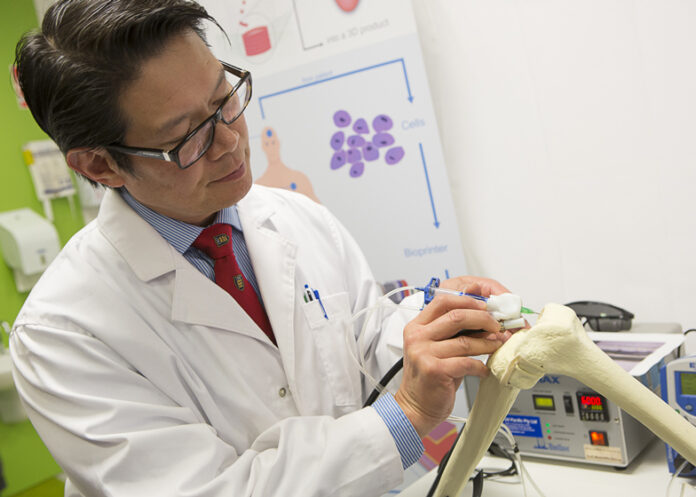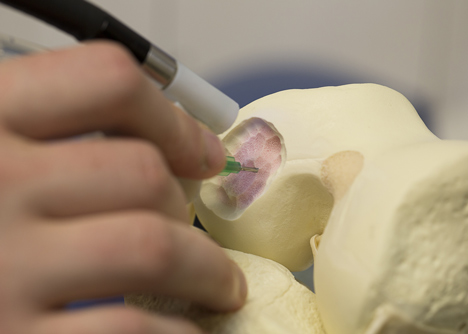
A handheld “bio pen” developed in the labs of the University of Wollongong will allow surgeons to repair damaged and diseased bone material by delivering live cells and growth factors directly to the site of injury, accelerating the regeneration of functional bone and cartilage (Griffiths, 2013).
Researchers from the UOW-headquartered Australian Research Council Centre of Excellence for Electromaterials Science (ACES) have developed the prototype BioPen that will give surgeons greater control over where the materials are deposited while also reducing the time the patient is in surgery. Delivery of stem cells and/or growth factors into the injury site is currently through injection of a biomaterial carrier (Griffiths, 2013).

The BioPen works similarly to 3D printing methods by delivering cell material inside a biopolymer such as alginate, a seaweed extract, protected by a second, outer layer of gel material. The two layers of gel are combined in the pen head as it is extruded onto the bone surface and the surgeon “draws” with the ink to fill in the damaged bone section (Griffiths, 2013).
A low powered ultra-violet light source is fixed to the device, allowing for the inks to be cured during dispensing and built up layer-by-layer. Following curing, the shell material will maintain its form, and allow the surgeon to construct a 3D scaffold in the wound site (Griffiths, 2013).
The composition of the cell-loaded material also provides greater protection and retention of cells in the wound site and can be surrounded by a polymer core to add structural strength to the surgical site. It can also be seeded with growth factors or other drugs to assist regrowth and recovery. All components in the implantable material are non toxic and tuned to degrade as the cells begin to populate and remodel the injured bone area. The design of the device allows it to be easily transported and the surgeon can operate with ease and precision in theatre (Griffiths, 2013).
Personal notes:
In medicine, it has been possible to implement biomaterials easily because the human body has less rejection of these. BioPen becomes a reference to analyze the development of the proposal to replicate it in other areas to make biobased materials viable. Despite being an example of some years, it demonstrates how exciting projects can be achieved using biobased materials and technology. Going back, medicine is where biomaterials have been positioned. That is, the development stage has been passed, and they are already produced for different applications such as tissue repair.
Griffiths, A. (2013, December 23). 3D-printing BioPen “draws” with living cells to repair damaged bones. Dezeen. Retrieved January 26, 2023, from https://www.dezeen.com/2013/12/23/3d-printing-biopen-draws-bone-repairs-with-stem-cells/



